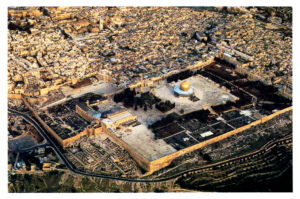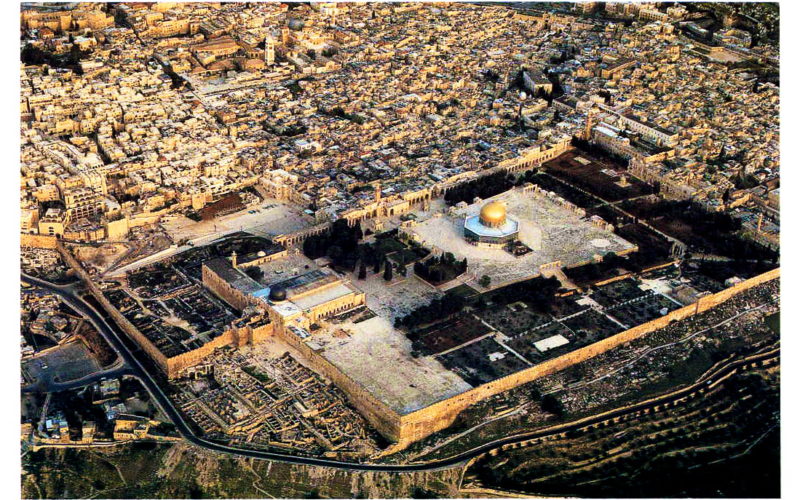Second Temple-era mikveh discovered under Al-Aqsa mosque
excerpts of article by Nadav Shragai in IsraelHayom.com
n 1927, an earthquake struck Jerusalem, killing 130 people, wounding 450 and destroying or heavily damaging about 300 buildings, including Al-Aqsa mosque. The Muslim waqf, led by Grand Mufti of Jerusalem Haj Amin al-Husseini, began restoring the mosque. Robert Hamilton, the director of the antiquities department during the Mandatory period in pre-state Israel, spotted an opportunity in the midst of disaster.
Hamilton took advantage of this unexpected window of opportunity to reach an agreement with the waqf that would allow archaeological investigation on the Temple Mount, for the first time ever, in the area where the mosque had collapsed. Hamilton documented the reconstruction work done by the waqf, photographed, sketched, excavated, analyzed and wrote about a series of findings, some of them surprising.
But this unprecedented cooperation between the British archaeologist and the Muslim clerics was not without a price. In the book that Hamilton later published, he makes no mention of any findings that the Muslims would have found inconvenient. It was no coincidence that these findings came from two historical periods that preceded the Muslim period in Jerusalem: the Second Temple era and the Byzantine era. These findings were hidden deep in the Mandatory archives department (which today is part of the Antiquities Authority archives in the Rockefeller Museum). These days they are finally coming to light.
 Eighty years later, Hamilton’s hidden findings are providing support for similar findings unearthed by two Israeli archaeologists, Dr. Gabi Barkai and Zachi Dvira. For the past seven years, Barkai and Dvira have been working on a unique project: sifting tons of earth that the waqf removed from the Temple Mount in the dead of night about 13 years ago. This earth is filled with tiny archaeological findings.
Eighty years later, Hamilton’s hidden findings are providing support for similar findings unearthed by two Israeli archaeologists, Dr. Gabi Barkai and Zachi Dvira. For the past seven years, Barkai and Dvira have been working on a unique project: sifting tons of earth that the waqf removed from the Temple Mount in the dead of night about 13 years ago. This earth is filled with tiny archaeological findings.
Beneath the floor of Al-Aqsa mosque, which had collapsed in the earthquake, Hamilton discovered the remains of a Jewish mikveh [ritual pool used for purification] that dated back to the Second Temple era.
Apparently, Jews immersed in this mikveh before entering the Temple grounds.
Barkai and Dvira found a multitude of small items from the periods of the First and Second Temples. Among these items were fragments of the small columns used in a hypocaust — a space under the floor of a room, used to heat the room above — and tubuli – hollow square bricks through which heated air passed, heating the space. Barkai believes that these are remnants of the heating system that the pilgrims, or perhaps the priests, used after completing the ritual immersion.
About half a meter (1.5 feet) under the floor of the damaged mosque, Hamilton discovered the remains of a Byzantine mosaic. When Dvira saw the photographs of it, he immediately recalled hundreds of thousands of mosaic stones and fragments of column capitals, marble used to cover stalls, and marble used for the grating of a church, all from the Byzantine period (324-638 C.E.) that had been found amid the earth taken from the Temple Mount.
These findings have brought about an important revolution in the way we view the history of that period. They suggest that contrary to everything that has been written in the history books, the Temple Mount contained structures — a church or churches — during the Byzantine period. It was not empty and desolate, as was believed until now.
“We have an enormous amount of findings from the Byzantine era,” says Dr. Barkai. “They are mainly ceramics, rare coins — including a coin of the last Byzantine emperor, Heraclius — and even a Byzantine lamp with an inscription that refers to Jesus. The people writing the history of the Temple Mount definitely have to reassess their work on this particular era.”
Sifting to win
The sifting of the earth from the Temple Mount to date has uncovered thousands of coins from various periods. Among the coins that generated the most excitement was the half-shekel coin, which was stamped during the great rebellion against the Romans and was used to pay the Temple tax. Another coin bears the image of the Seleucid king, Antiochus IV (Epiphanes), under whom the anti-Jewish decrees were promulgated and the Hasmonean rebellion began.
Another coin that came from the soil of the Temple Mount dates back to the rebellion during which the Second Temple was destroyed. This coin bears the inscription “The liberty of Zion.” Other findings include animal bones, some of them perhaps of animals kept on the Temple Mount for sacrifice and which were burned during the destruction. Fox and pig bones were found as well.
To date, 120,000 volunteers have participated in the Temple Mount Sifting Project. Even now, excitement breaks out every time someone shouts “I found something!” The Nature and Parks Authority made the land available for the project. Bar-Ilan University is giving the project academic sponsorship, and the Antiquities Authority has issued it a license. The Elad organization provides the funding.
on the Temple Mount.”
for the full article click here.

